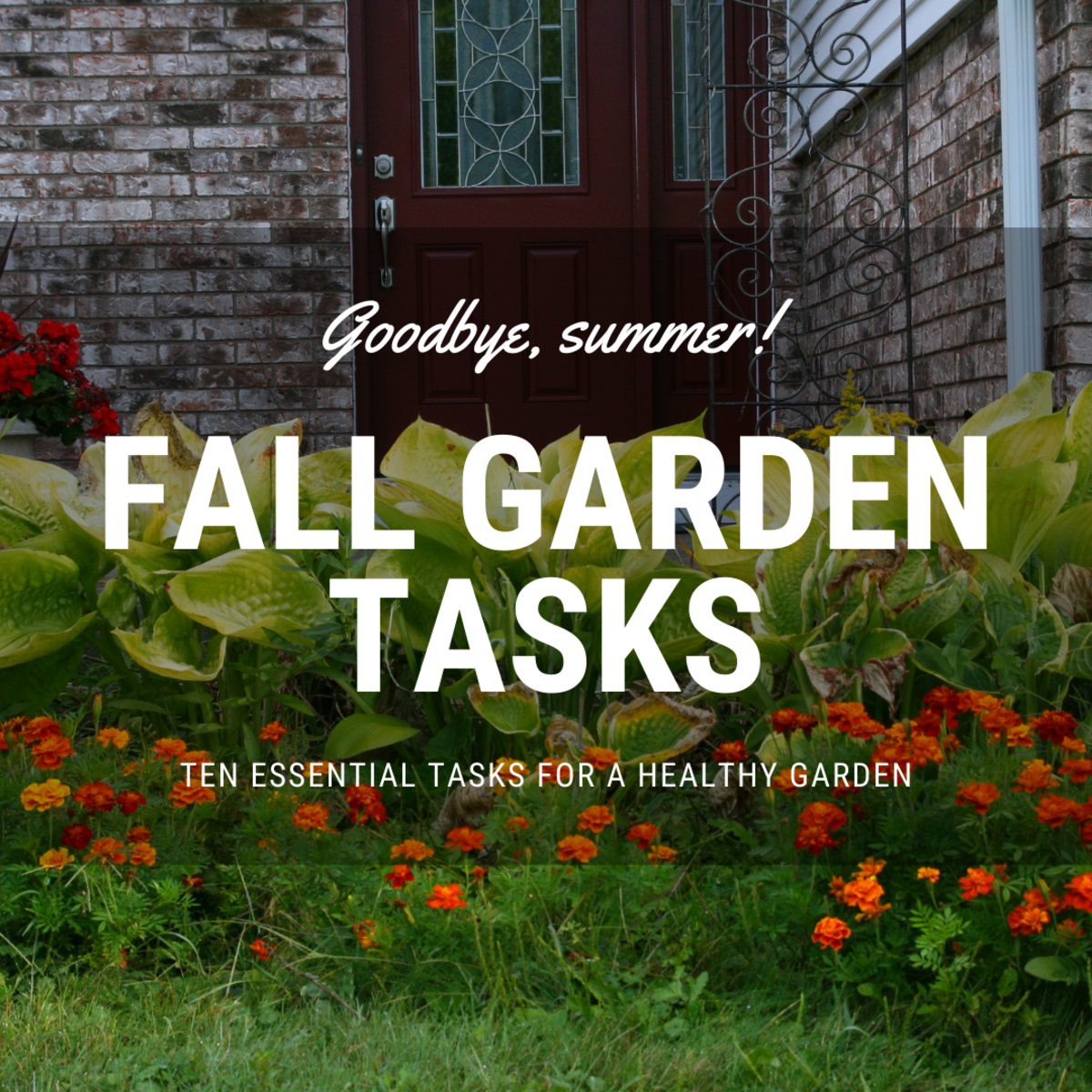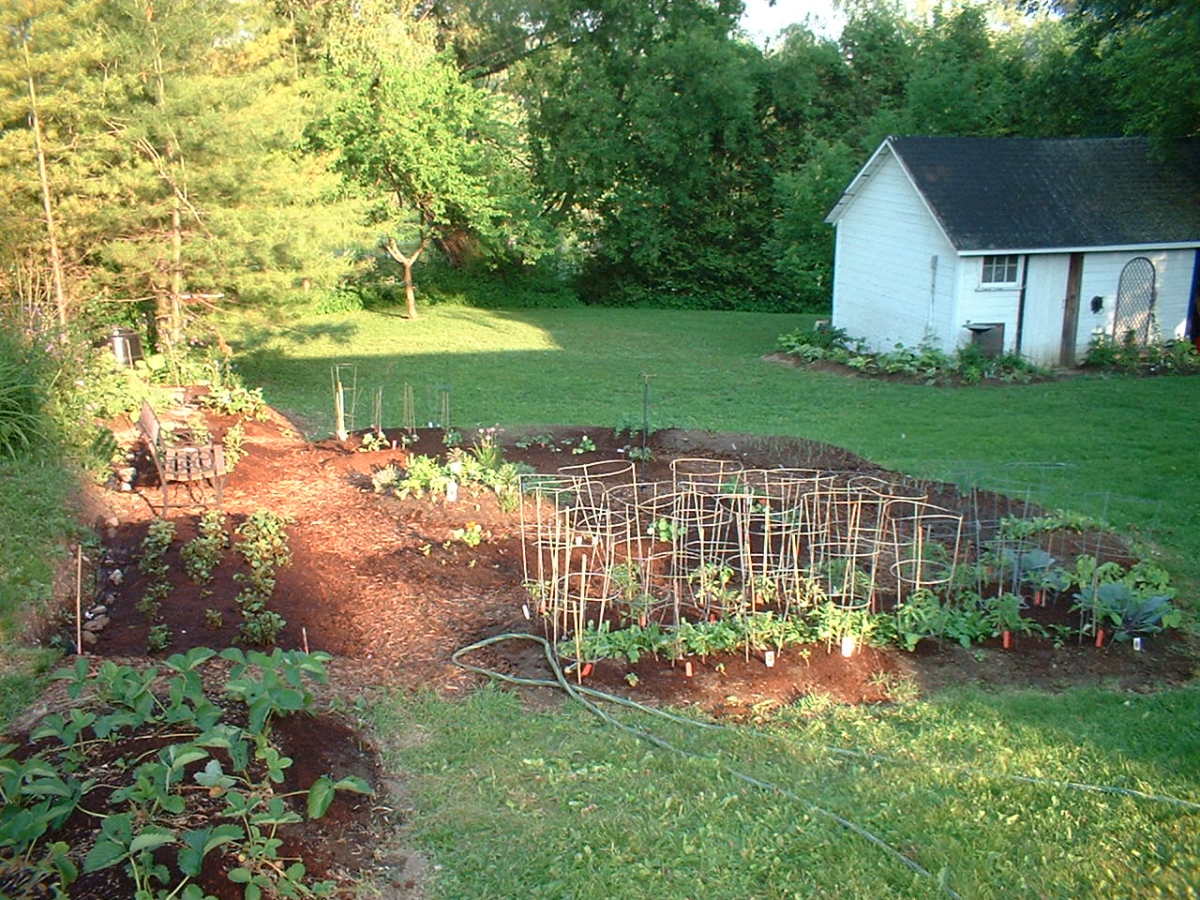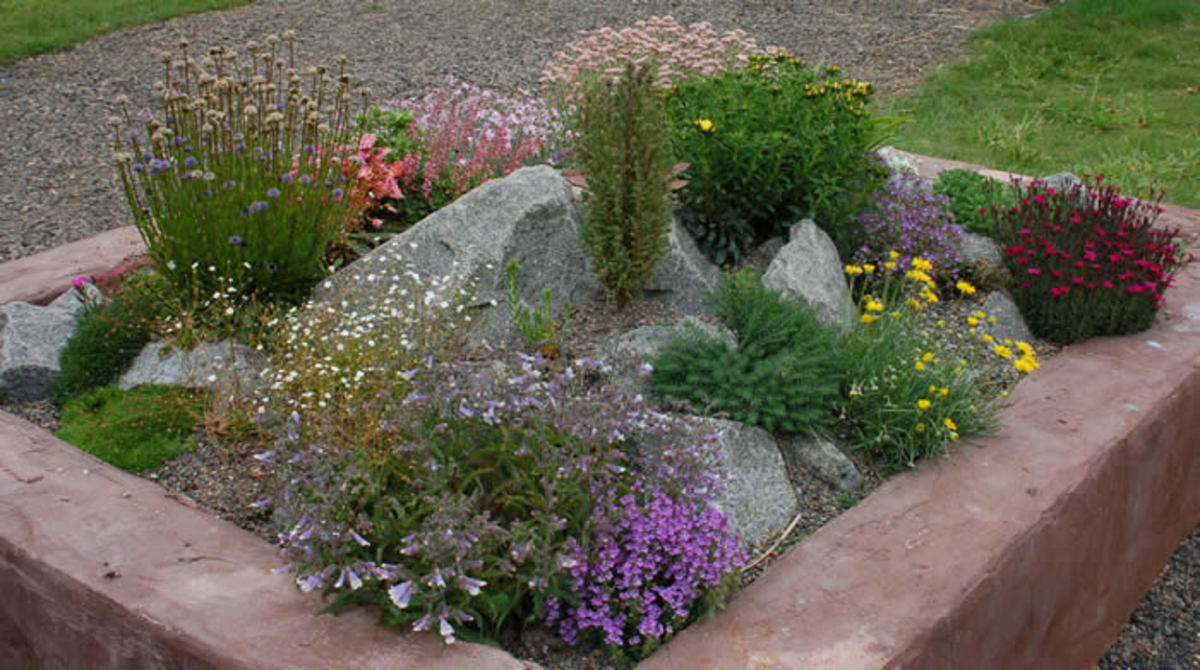Gardening in Wet Soils
Success in Wet Soils
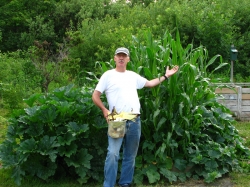
Successful gardening in wet soils with raised beds.
Wet soils are no impediment to success in gardening, if you know how to beat it. We have a sizable garden, all growing in a wetland area at the back of our yard. Every spring, the area floods and doesn't really dry out until mid-July...much too late for planting in our area. We combat these less than ideal conditions with raised beds, and you can to.
Our Raised Bed in Full Sun

Choosing the Location of a Raised Bed
A south or southwest facing area is best for maximum sun. You need at least 6 hours of sun for most vegetables. Garden beds containing heat sensitive plants, such as lettuce, spinach and peas, can benefit from a little shade in the afternoon. An overhanging tree or improvised fence to the west can provide much needed shade during the hottest part of the day.
Notice our salad bed in the picture. There is a wall of pussy willows behind it. That wall of high bushes to the west provides cool shade for our greens and peas. This helps to keep the greens from bolting too soon and the peas to stay sweet.
How to Build a Raised Garden Bed
Raised Bed Kits and Garden Fencing
If you don't have trees or fences to provide afternoon shad for you garden, cloth or plastic privacy fencing can be used instead. Just attach it to metal or wooden stakes. It's easy to install and can be reused over and over again.
One of Our Garden Beds
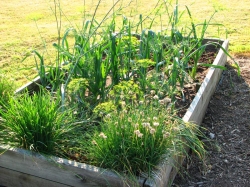
Spacing for Your Raised Beds
Properly oriented raised beds will contribute to the health of your plants, as well as making your beds accessible. Proper spacing encourages air flow and discourages disease. Proper orientation will give your plants the maximum amount of sun for healthy growth. We use some general guidelines for placing and spacing our beds.
1 - Distance between beds should be 4 feet.for beds with spreading plants, like squash, and can be as small as 2 feet for beds with upright plants like onions.
2 - Build your beds no bigger than you can reach to the middle. Generally, a 4 foot wide bed will be easy to reach from both sides of the bed.
3 - Orient your beds to face east to west lengthwise. This will give your plants a south facing position for maximum sun exposure.
Our only bed that breaks these rules is our strawberry bed. It is about 10 feet wide, but the strawberries are planted in rows with plenty of walking space in between, so it's all good.
Do You Have a Green Thumb?

Do you have the magic touch when it comes to growing plants, or does the sound of your approach make them wilt with fear?
Do You Have a Gree Thumb?
Books on Raised Bed Gardening
No gardening library is complete without a good book on raised beds. It is one of the simplest solutions to a problem that plagues many home gardeners.
Our Strawberry Bed
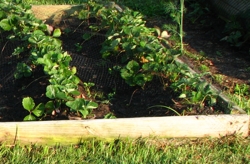
Choosing Materials for Your Raised Bed Garden
Raised beds can be made from various materials. The most popular material is wood, but some less conventional materials can be used as well.
Wood - Untreated 4x4, 2x6 or 2x12 for higher beds. Treated wood or railroad ties are not suitable for gardening. They contain toxic chemicals that can leach into the soil and contaminate your vegetables.
Resin or Plastic Lumber - Lumber made of resin or plastic is durable and handles just like wood. Some are also made of recycled materials making them earth friendly.
Stone or Brick - Raised beds can be made of piled up stones, cement blocks or bricks. It is more labor intensive to put up, but will last virtually forever with little upkeep. Another advantage to Northern Gardeners who use these materials, is that stone imparts warmth to the soil as the sun heats it up. You may be able to plant a week or two earlier than others in your area giving you a longer growing season.
Raised Bed Gardening Made Easy
Raised bed garden kits make building a raised bed foolproof. Modern kits come with everything you need to build your garden beds, and they are very affordable for most budgets.
Squash Blossom
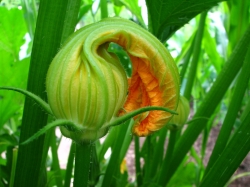
Meet my Friend Jane Gates
Garden Landscape Designer Extraordinaire
I met my friend Jane when we were both writers for eHow.com. I came to really appreciate and admire her knowledge of gardening, and, I have to admit, was a just a little bit jealous of her abilities as an artist. Always quick to share her wealth of knowledge, she has kindly given me a link to her gardening website. Her article on building a raised bed will guide you through the steps of creating your own raised bed garden.
I am pleased to promote her newest published work, "All the Garden's a Stage". See just how beautiful your garden can be with her tips for a colorful, beautiful garden.
Be sure to visit some of her fabulous gardening articles here on Squidoo.
All the Garden's a Stage - by Jane Gates
Beautifully illustrated with over nearly 300 photos, this book takes you beyond the mundane world of planting zones and seed starting charts. It is chock full inspiration for every kind of gardener. Whether you have only a small balcony in a city apartment, or hundreds of rolling acres to plant, Jane has the information you need.
How to:
-Select plants that compliment each other
-Finding plants for trouble spots
-Creating texture and color in the garden
-Basic plant care
-Improving your soils
...and more.




